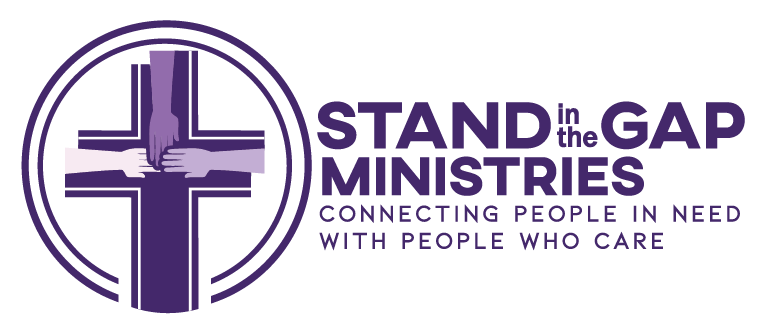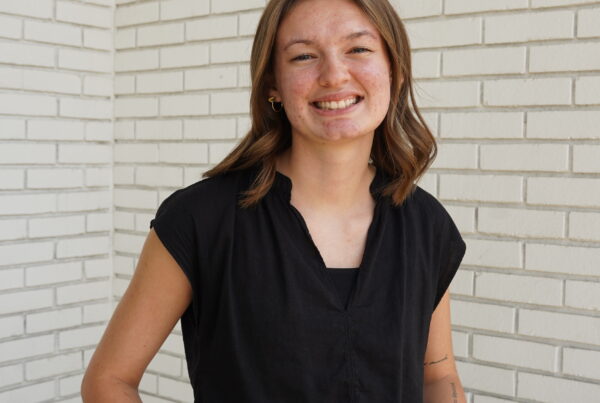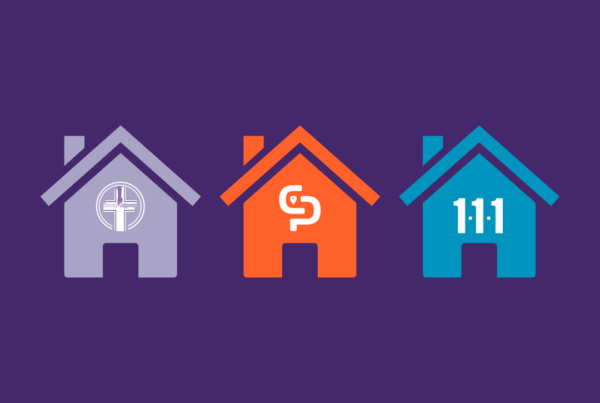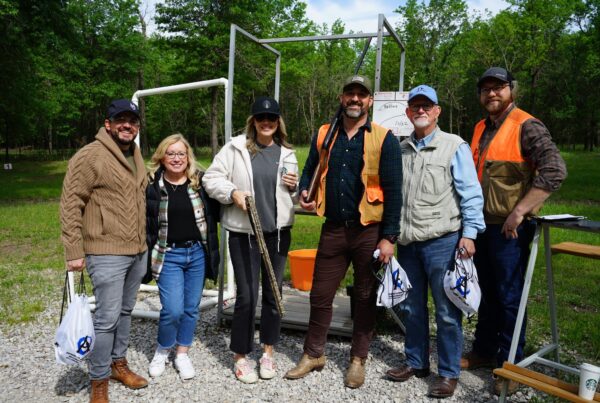Why does hope matter?
People with “high hope” have goals, a plan to achieve their goals (pathways), and the motivation to pursue the plan (agency). Academic research confirms that higher hope individuals have greater satisfaction with life, better coping skills, a buffer against anxiety, and a greater sense of a meaningful life.
Most of our Women in Transition and Life Launch clients have had traumatic life experiences that make hope hard to come by and harder to keep. According to hope expert, Dr. Chan Hellman (Director of OU Tulsa’s Hope Research Center), “Hope is very much a social gift. We share it with each other. It doesn’t happen in isolation. Hope begets hope.”
That’s where Stand in the Gap comes in…
Hope: a definition
The belief that the future will be better and you have the power to make it happen.
Pathways
refers to the steps a person should take to reach a goal.
Components of Hope
Pathways and Agency work together so that an individual can reach a desired goal.
Agency
refers to a person’s willpower or motivation to pursue those pathways.
Okay.
But can you really measure it?
Since 2006, Dr. Chan Hellman has provided outcome assessments to nonprofit organizations based on the emerging science of Hope Theory. Based on their years of academic research, Dr. Hellman’s team at the University of Oklahoma – Tulsa’s Hope Research Center has designed evaluations and research projects that study existing programs. The goal is to gauge outcomes as related to a client’s hope.
We started partnering with their team in 2014.
We worked with research scientist, Dr. Evie Muilenburg-Trevino, to create a survey specifically for Stand in the Gap clients. Our resulting Hope Survey is based on tested and proven studies, but refined for the people we serve.
To measure the growth of hope in the Women in Transition and Life Launch clients we serve, we needed to primarily focus on:
- psychological resources and strengths (how do you handle stress?),
- coping skills (how do you handle a problem?),
- and co-dependency (how do you relate to other people?).
Keep scrolling for the latest results from our Women in Transition and Life Launch Hope Surveys
Our partner was featured in Tulsa People
Learn more about the Hope Research Center by reading the article now!
Read Now!and on the Hope Leads podcast
Learn more about hope science by listening now!
Listen Now!“Women in Transition is the most impactful program I have measured in 12 years of work.”
Dr. Evie Muilenburg-Trevino, Research Scientist
Women in Transition Results
CHARLY’S STORY OF HOPE
from Program Director, Rhonda Bear’s, perspective
Charly walked around prison with her head held low. She was missing her front teeth and she tried to hide herself. She was doing all the "right" things, studying her Bible, taking classes, following the rules, but she didn't believe in herself and she didn't believe that anyone else did either.
After her release, she got a job, she was matched with a Stand in the Gap family, she worked hard to restore her relationship with her kids and wanted guardianship of them more than anything else. After about a year, someone in her community offered to pay for her front teeth. She got a better job, working for the Mental Health Association. And then she got promoted.
Today, her kids are both back at home with her, talking about their days at school, sharing dinners together at the table, and watching Charly hold her head high.
I see miracles like this every day. But I see them as they play out over months and years. At this point in Charly's story, it can be hard to remember her as she once was. That's one reason that I'm grateful for the Hope Survey. I know that Stand in the Gap works. But the Hope Survey allows me to measure it, to see it on paper.
Seeing numbers in black and white, I am reminded that not only has Charly come a long way, but she still has even more hope to grow.
Based on the feedback of 39 women who completed the entire Women in Transition program (participated in the Women in Transition course while incarcerated, lived in a transitional living facility post-incarceration, and participated in a Stand in the Gap small group). Their average age was 38.1.
Hope increased
87% of individuals scored as having “high hope” after participating in Stand in the Gap.
codependency decreased
68% of individuals decreased their level of codependency (an unhealthy way of relating to other people) after participating in Stand in the Gap.
connection increased
63% of individuals had an increased sense of connection to other people after participating in Stand in the Gap.
Flourishing (higher scores indicate psychological resources and strengths)
Higher
after completing Women in Transition.
Emotional Coping Skills (higher scores indicate ability to handle thoughts and feelings associated with stress)
Higher
after completing Women in Transition.
Sense of Connection (higher scores indicate feeling connected to other people in meaningful ways)
Higher
after completing Women in Transition.
“After participating in Life Launch, statistically significant findings were observed for hope, self-esteem, existential wellbeing, and trust.”
Dr. Evie Muilenburg-Trevino, Research Scientist
Life Launch Results
KATHERINE’S STORY OF HOPE
from Program Director, TJ Warren’s, perspective
Katherine was 17 when I met her. She was quiet, kind, inquisitive, and quirky in the best way possible. She was an attentive student, a hard worker, and full of imagination and conversation. Amidst all the wonderful things I saw in Katherine she struggled to believe that any of those things were true about her at all. As I walked through the Life Launch interview with Katherine I knew she was going to be a great fit. But like every young adult that we match in Life Launch there are always difficulties, and struggles to overcome. For Katherine it was severe anxiety and depression that would render her incapacitated for weeks at a time, unable to attend school, or even venture out from the four walls of her home.
Then I matched Katherine with her Life Launch team. All three were women who never once gave up calling, texting, and reminding her that her struggle with anxiety and depression did not define her, and no matter how low or isolated she got, they always showed up to say, “we love you.”
After a year of walking with her team through the joys and struggles of life, Katherine came out the other side a very different person. At her graduation party she joyfully boasted about how she purchased her own car, enrolled in college, and gave the keynote speech at her graduation. Just 12 months prior she was horrified to step outside. Now she had full confidence in her abilities. She told us, “If I would have not had mentors I would not have known that the world wasn't really a scary place.”
Katherine's team helped cultivate hope in her life. This hope changed her life in a way that none of us could have imagined.
Based on the feedback of 30 young adults who completed the entire Life Launch mentorship experience. Their average age was 17.8.
Hope increased
74% of individuals increased their level of hope after participating in Stand in the Gap.
wellbeing increased
70% of individuals increased their level of existential wellbeing (sense of life purpose) after participating in Stand in the Gap.
trust increased
78% of individuals trust in other people increased after participating in Stand in the Gap.
Hope (higher scores indicate belief that the future will be better and you have power to make it happen)
Higher
after completing Life Launch.
Pathways (higher scores indicate understanding the steps a person should take to reach a goal)
Higher
after completing Life Launch.
Agency (higher scores indicate willpower or motivation to pursue pathways)
Higher
after completing Life Launch.
Learn more about Women in Transition
Stand in the Gap’s proven effective small group mentorship ministry for women after incarceration.
Learn more about Life Launch
Stand in the Gap’s proven effective small group mentorship ministry for young adults from hard places.



